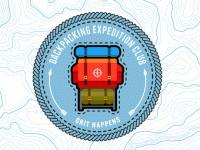Grit Happens in PBL
Your content has been saved!
Go to My Saved Content.This year’s trendy new term in education is "grit." Love it or hate it, grit is being talked about on blogs and other social media, and Edutopia just released an excellent new video about it. No doubt there are people presenting staff development workshops about grit in schools around the nation, and companies are quickly producing curriculum materials to sell. Here at Buck Institute for Education (BIE), we are seeing grit show up in our PBL 101 Workshops, when we ask educators to list the qualities of an "ideal graduate." For sure, grit is happening in 2014!
Much of the sudden prominence of grit is due to the work of Angela Duckworth at the University of Pennsylvania who even has a "Get Your Grit Score" tool. Recent books related to the topic include Mindset: How You Can Fulfill Your Potential (2012) by Carol Dweck of Stanford University, and How Children Succeed: Grit, Curiosity, and the Hidden Power of Character (2012) by journalist Paul Tough. All of the above offer much food for thought for teachers, parents, and education leaders.
What I see missing from the discussions of grit is, guess what . . . project-based learning.
Beyond Character Education
Grit has been known by other names in the past: toughness (that’s the John Wayne/Jeff Bridges cowboy type), or resilience, or perseverance despite challenges and setbacks. Current discussions of grit in education focus on the need for students to pursue long-term goals -- such as going to college or becoming a nurse -- and to hang in there when trying to learn challenging material in school.
I'm reminded of "character education" efforts when I hear how students can be taught to get, er . . . grittier (if that doesn't sound too much like what happens to my lunch on a windy day at the beach). It’s all fine, as far as it goes. Have students learn about people who showed persistence in the face of adversity. Ask young people to commit to long-term goals and write about how they intend to achieve them. Help them monitor their progress and reflect on how they are meeting challenges. Change the way we talk to students so that the emphasis is on working hard, instead of "being smart." Teach them to use Tools of the Mind that help control impulsivity, avoid distractions, stay focused, and manage emotions.
But in character education, the most successful efforts to help students become good people go beyond simply teaching them what it means to be good. To really help students become ethical, kind, honest, and so on, they must be asked to act that way, and held accountable for doing so.
Getting Things Done in the Real World
Similarly, to build grit in students, put them in situations that require it. Instead of asking them to show grit by finding ways to sit dutifully through years of meaningless assignments and boring instructional methods, give students challenging, long-term projects that call for grit.
Imagine how much grit it would take to do something like the Shrimp Project, where teacher Laurette Rodgers led her fourth graders on a multi-month quest to protect an endangered species. The students had to work with local ranchers on whose land a freshwater shrimp's habitat was shrinking, and win their support for planting trees and bushes along creeks. The students had to contact state legislators and persuade them to pass bills, and raise funds by selling t-shirts to local citizens. Imagine how much students learned about persistence and how to set and achieve long-term goals!
Even a less ambitious project -- say, to create a book about local history, or propose a solution to a community's traffic problem -- requires grit. No project is going to unfold perfectly. Students are going to face setbacks, decide they have to find new resources, rethink their ideas, or try a variety of solutions before deciding on the best one. A "fail fast" approach is needed in PBL – it's part of the process of innovation. Try something, see if it flies, then try again. Don't give up. Think critically about what you’re doing, reading, and saying. Confidently defend your work to a public audience. That's how to learn and demonstrate what it means to have grit.
Author's Note: The term "grit happens" came to me from BIE's Master Punster Alfred Solis.
